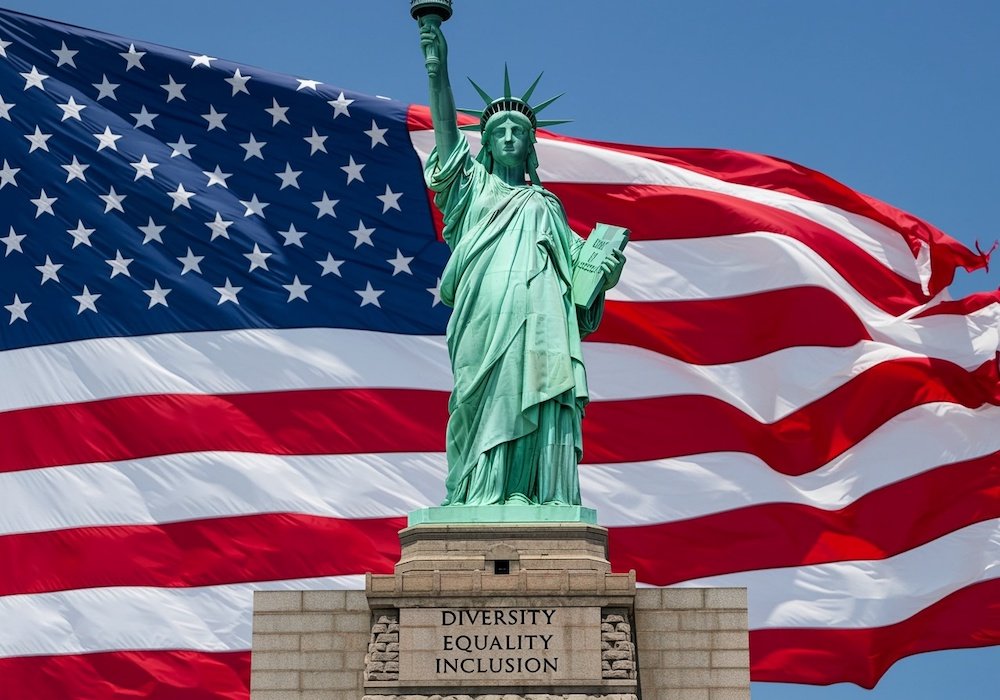The Evolution of DEI in America: Progress & Pushback
During the 1960s, a decade of sit-ins, freedom riders and civil rights marches, I was editor and assistant general manager of the Anchorage Alaska Daily News. I frequently wrote editorials and published writings of others who supported the civil rights movement.
One day I received a letter from a reader who asked a question that left me surprised and embarrassed: If I was such an avid supporter of civil rights, how come the Daily News had no Black employees? Until I received that letter, I was totally oblivious to the fact that we had no Black employees. Not only were there no Blacks employed, I had no recollection of ever seeing an application from a Black person. The episode, you might say, “woke” me.
How One Hire Sparked Change
I called Willard Bowman, executive director of Alaska’s newly created Human Rights Commission and asked if he could explain why the Daily News had no Black applicants. He wasn’t surprised. It’s because, he said, the Black community sees an all-White business, assumes it racially discriminates and that made people self-conscious about even applying.
At the time I had an opening for a receptionist and asked Bowman to suggest someone for the job. Within a few days a bright young Black woman showed up. I hired her and moved the reception desk to a more visible place in the front lobby. It wasn’t long before we began receiving applications from other Blacks in the community.
Affirmative Action and the Rise of DEI
The experience was my first with affirmative action, or what now is popularly called Diversity, Equity and Inclusion (DEI). Whatever you call it, it’s a set of policies and procedures designed to help redress the social and economic effects of past discrimination.
There’s no denying that centuries of slavery followed by decades of discrimination after emancipation markedly inhibited Black opportunity for education, employment and resources for achieving higher living standards. For example, in 1940 only 1% of Black students received college degrees. Now, that number is about 26%. In 1940, only 14% graduated from high school. Now, that number is near 75%.
Given equal opportunities, life for African Americans in the U.S. has dramatically improved and their contribution to society is exponentially more valuable.
As for discrimination against women, until Congress addressed the problem in the 1970s, banks could legally prohibit women in the U.S. from getting their own credit cards or bank accounts without a husband's permission.
As recently as 2007, only 28% of doctors were women. Now, it’s not unusual for more women than men to attend medical school. In 1940, only 2.4% of all women were lawyers. Now, it’s more than 40%. Title IX has been life-changing for women in sports.
The DEI Backlash: A Dangerous Regression
During my lifetime, government policies, responding to social pressures, have transformed diversity, equality and inclusion for Americans. Barriers that long excluded people based on race, gender, sexual orientation and religious belief have given way. Public opinion surveys no longer reject equality for marginalized groups in our society.
Years ago, when I made race a requirement for hiring that receptionist at the newspaper, it was implicit discrimination against other qualified candidates based on race. When Harvard or Michigan gave admission preference to a Black student, that took a slot that perhaps a White or Asian student with comparable credentials might have filled. So, yes, that was essentially reverse discrimination
And as DEI has proven successful at lifting African-Americans, a backlash has formed claiming that we’ve gone too far. That view was partially codified when in 2023, the Supreme Court ruled that race conscious college admission policies aimed at maintaining racially diverse student bodies violated the Constitution. The ruling didn’t apply to hiring or business practices, leaving the law of the land complicated when it comes to DEI.
Have we gone too far? Have past IOUs been fully paid? There are legitimate policy differences over affirmative action, worthy of serious debate. Unfortunately, because of the crassness and cruelty of Trump and his appointees, what we’re getting is not policy but a political reign of terror. Elon Musk’s people indiscriminately ordered anything and anybody associated with DEI, even marginally, erased from the federal government and from every contractor, university or non-profit that deals with the government.
Many high-level, competent leaders have been fired, because, it seems, they are women or black. And the anti-DEI axe is cutting deep. Including, according to National Public Radio, “hundreds and possibly thousands of federal employees targeted because of their past involvement with government DEIA programs and initiatives — or perhaps because the Trump administration merely associated them with the concepts of diversity, equity, inclusion and accessibility.”
Trump and his enablers have no interest in or understanding of the fact that DEI isn’t just a policy they don’t favor, it’s the foundation of American strength. Diversity. Equity. Inclusion. Those words would fit well with “mom” and “apple pie.” Americans should be proud that we recognized past wrongs and are working to right them.
We redact those words, and those policies, only at our national peril.
Comments? Criticism? Contact Joe Rothstein at jrothstein@rothstein.net
Always Get It’s Always Something
Sign up to get the most recent column set to your inbox for free.



What happens when a fun-loving, charismatic, reform-minded Mexican-American billionairess becomes president of the United States and strikes fear in the pocketbooks of a cabal of the rich and powerful?